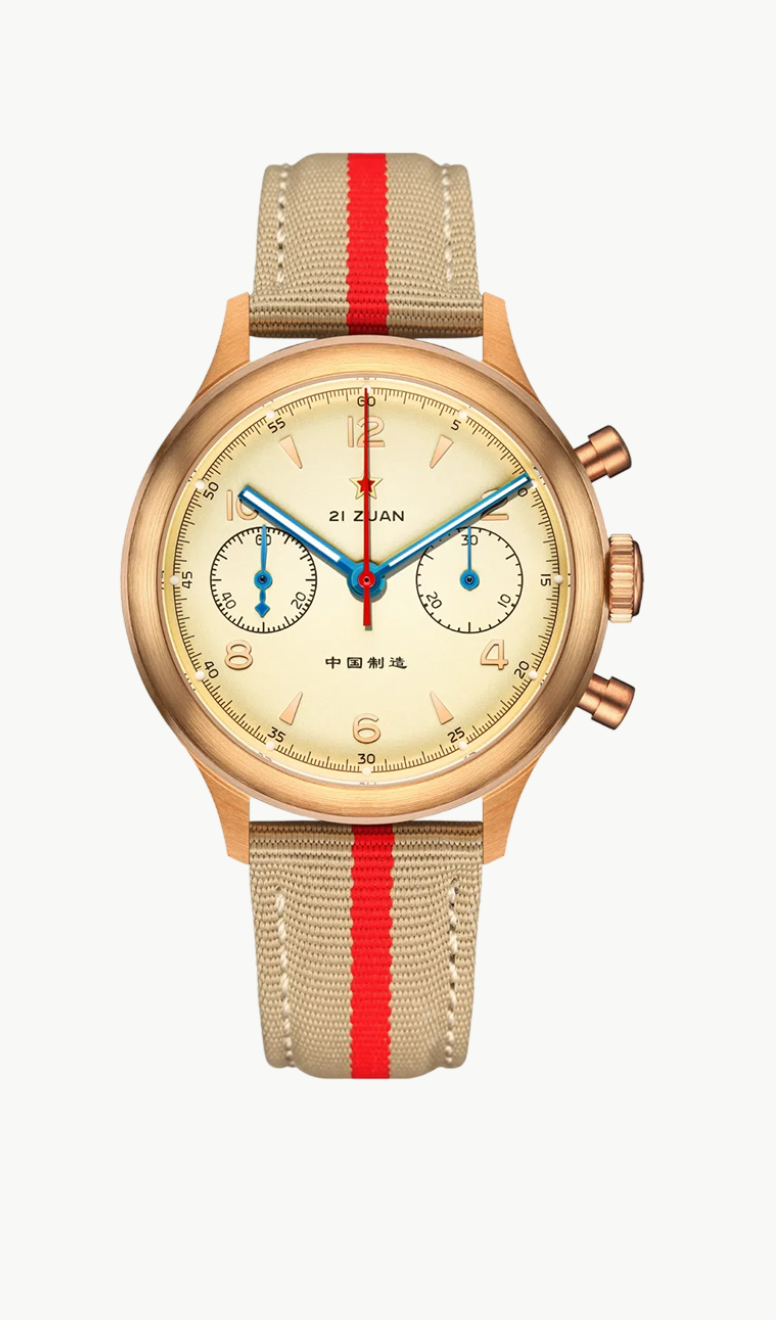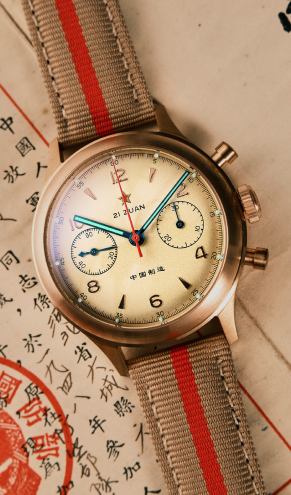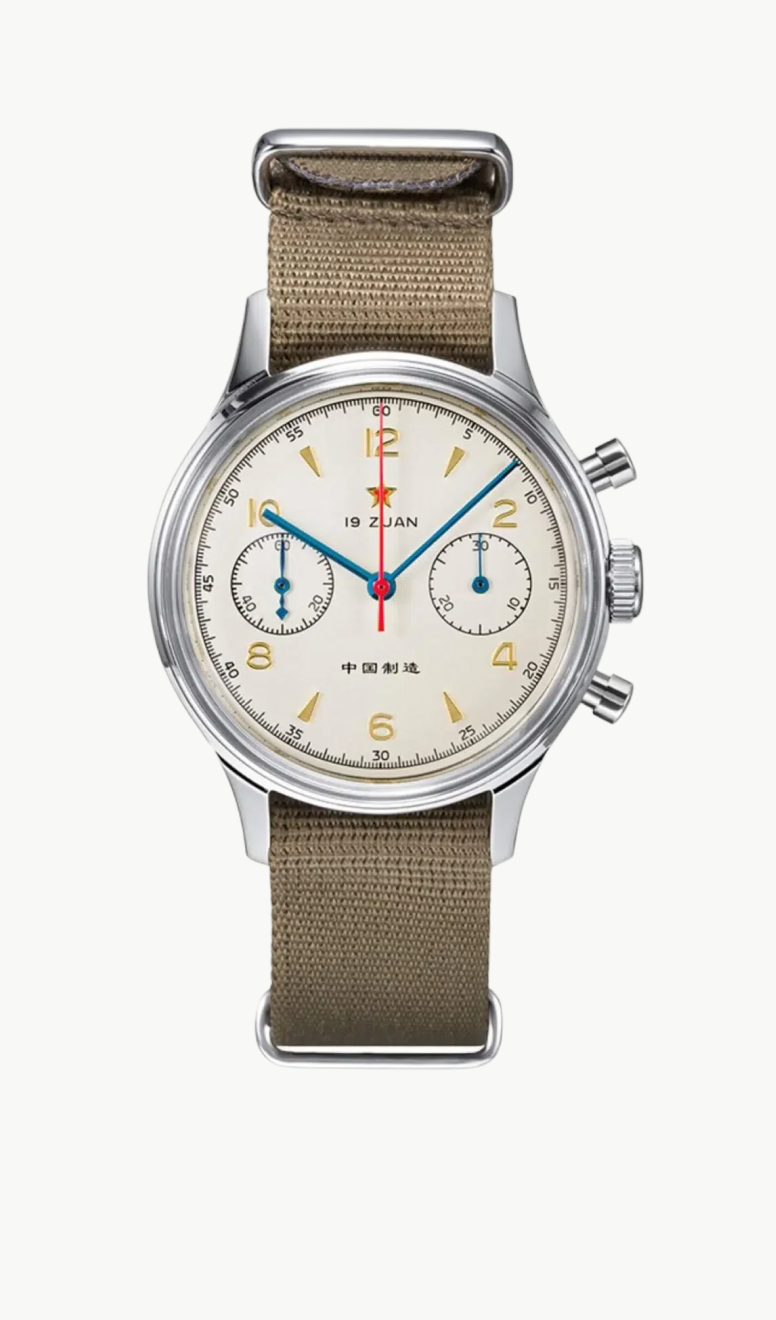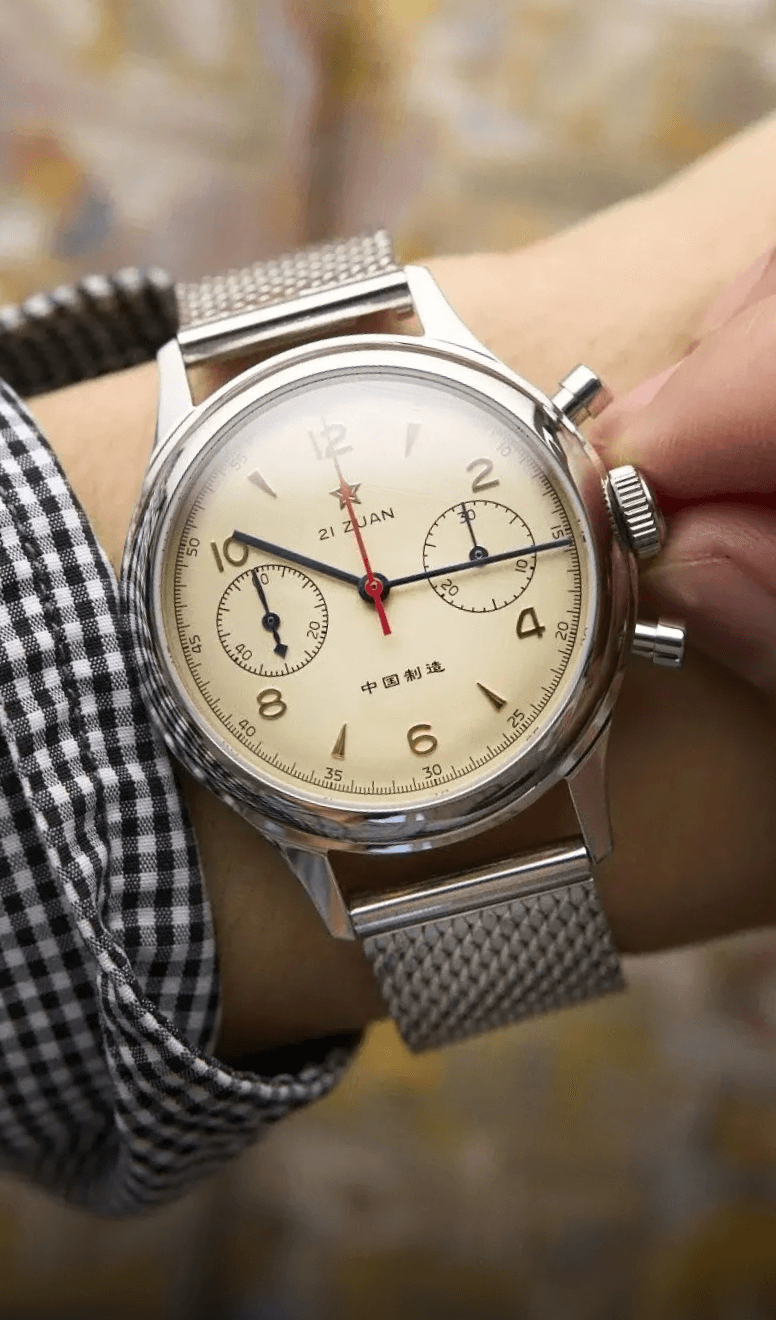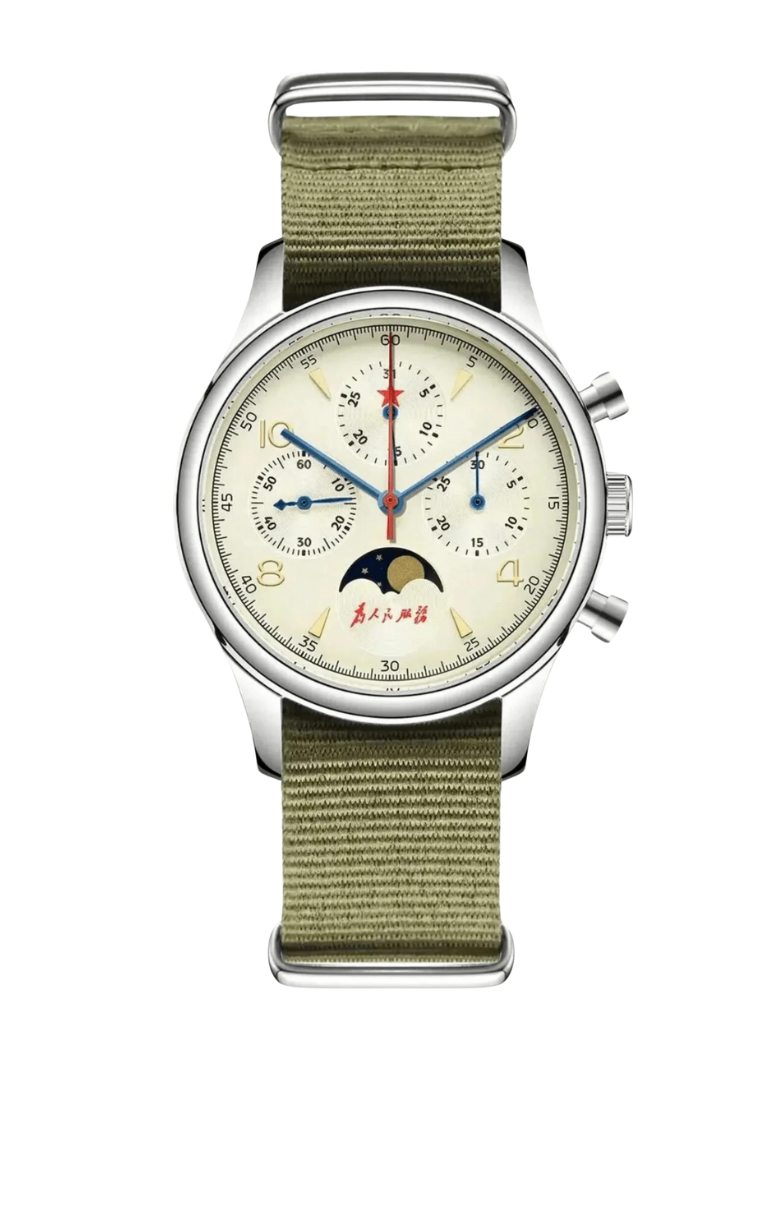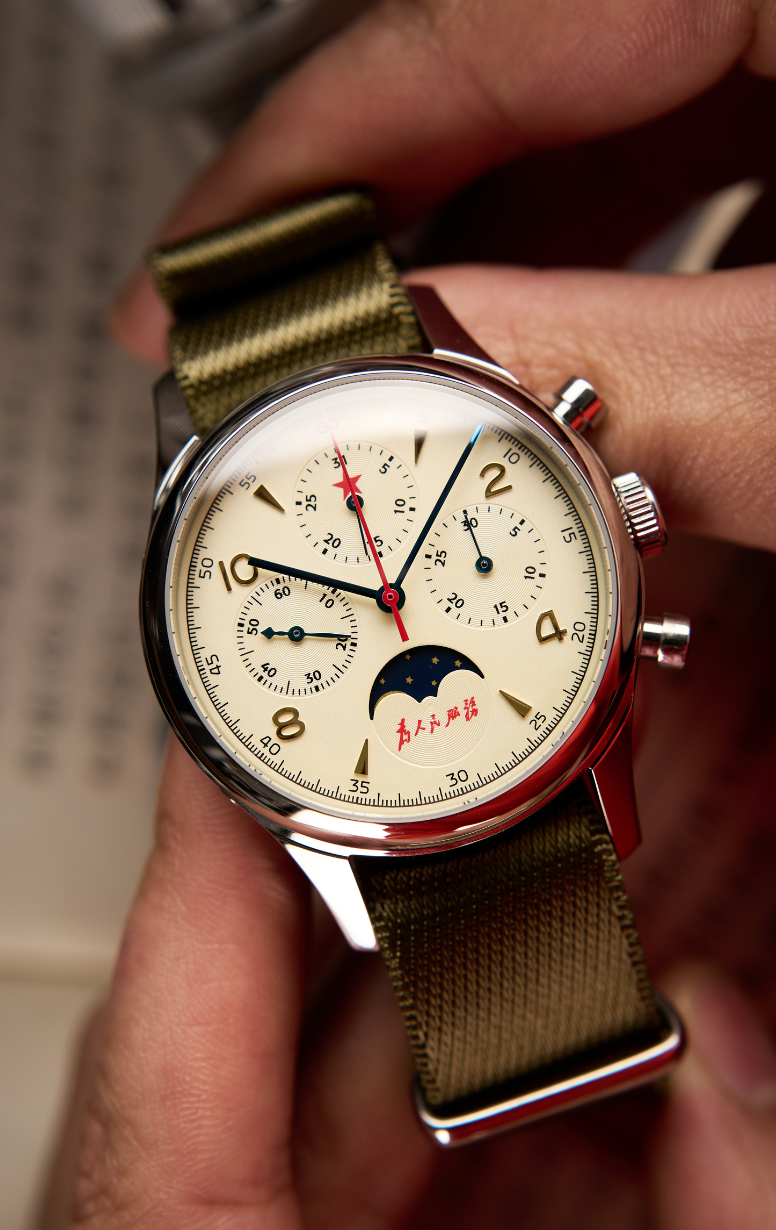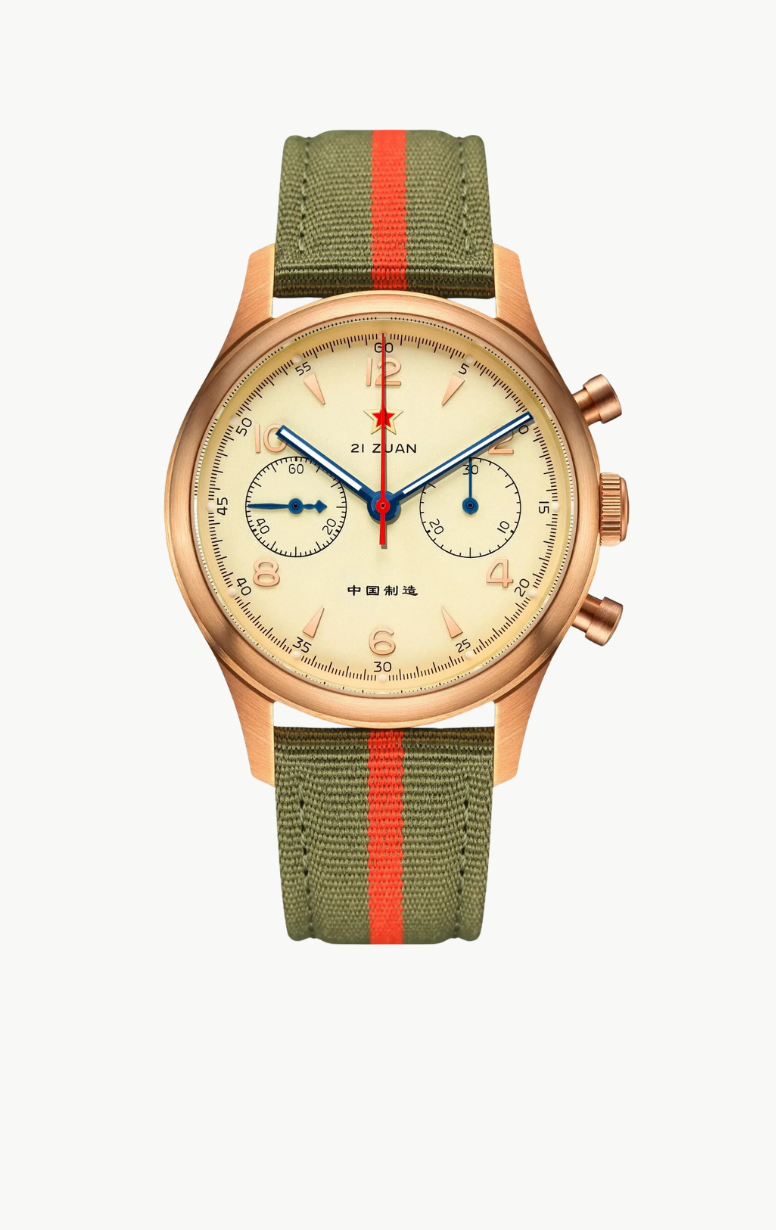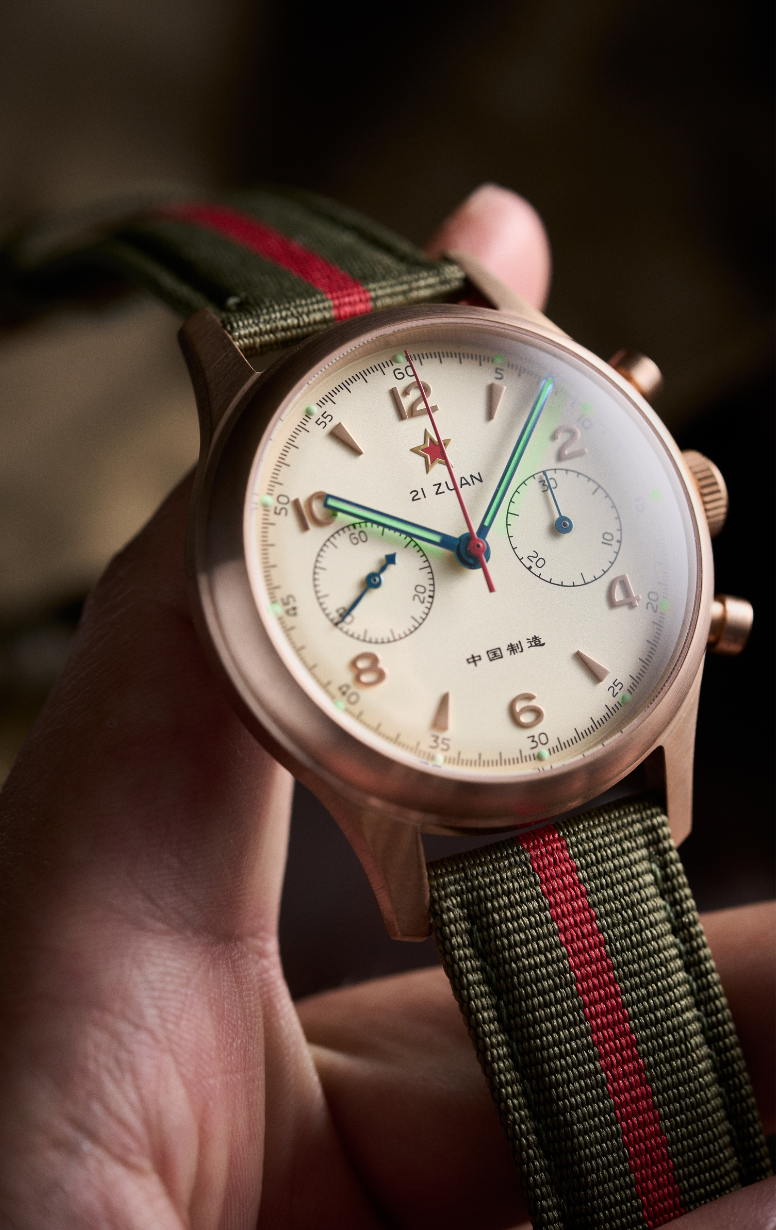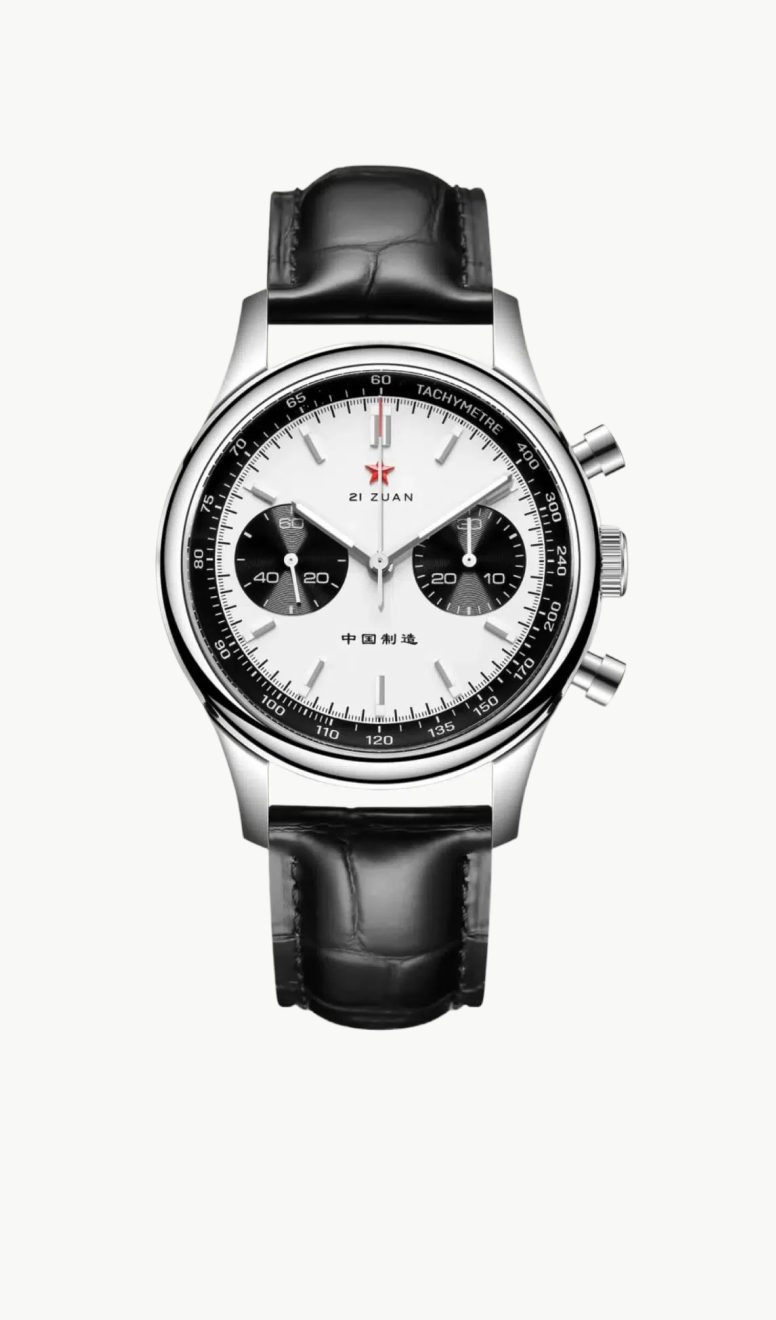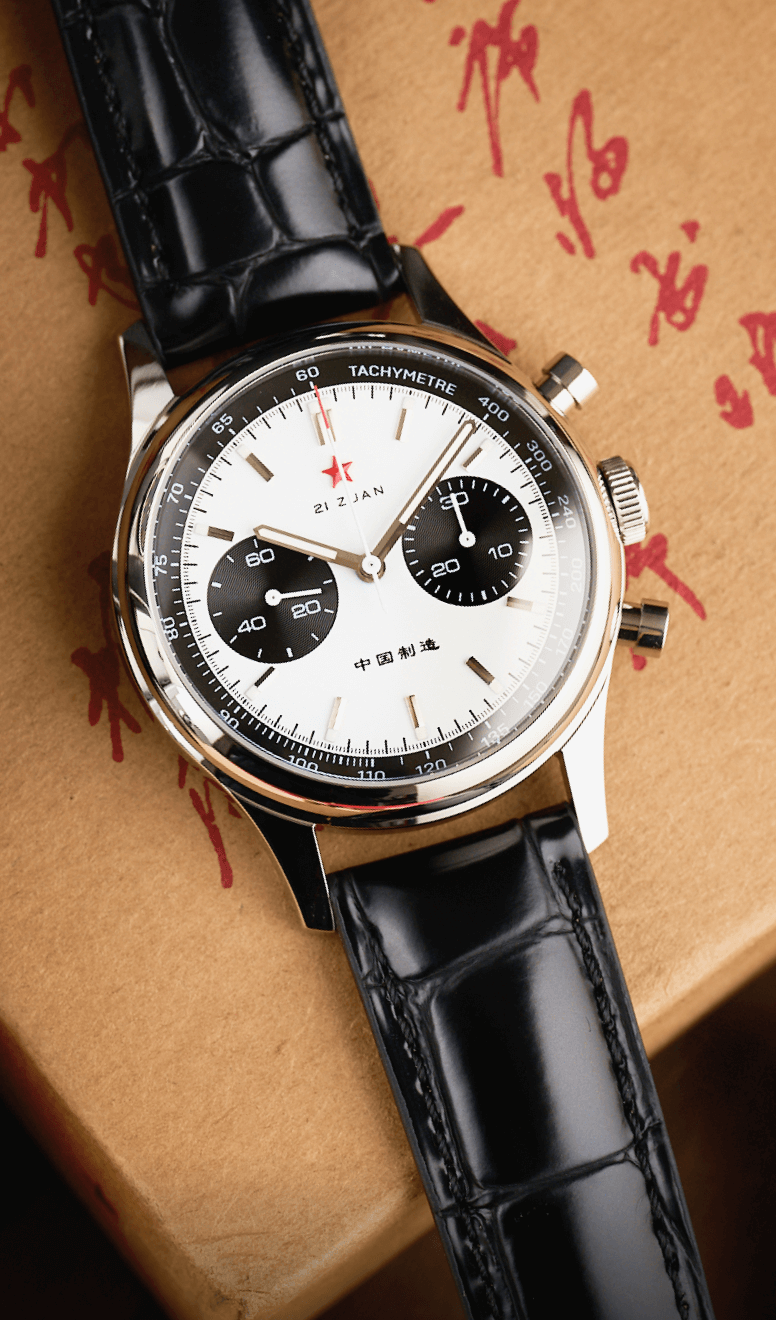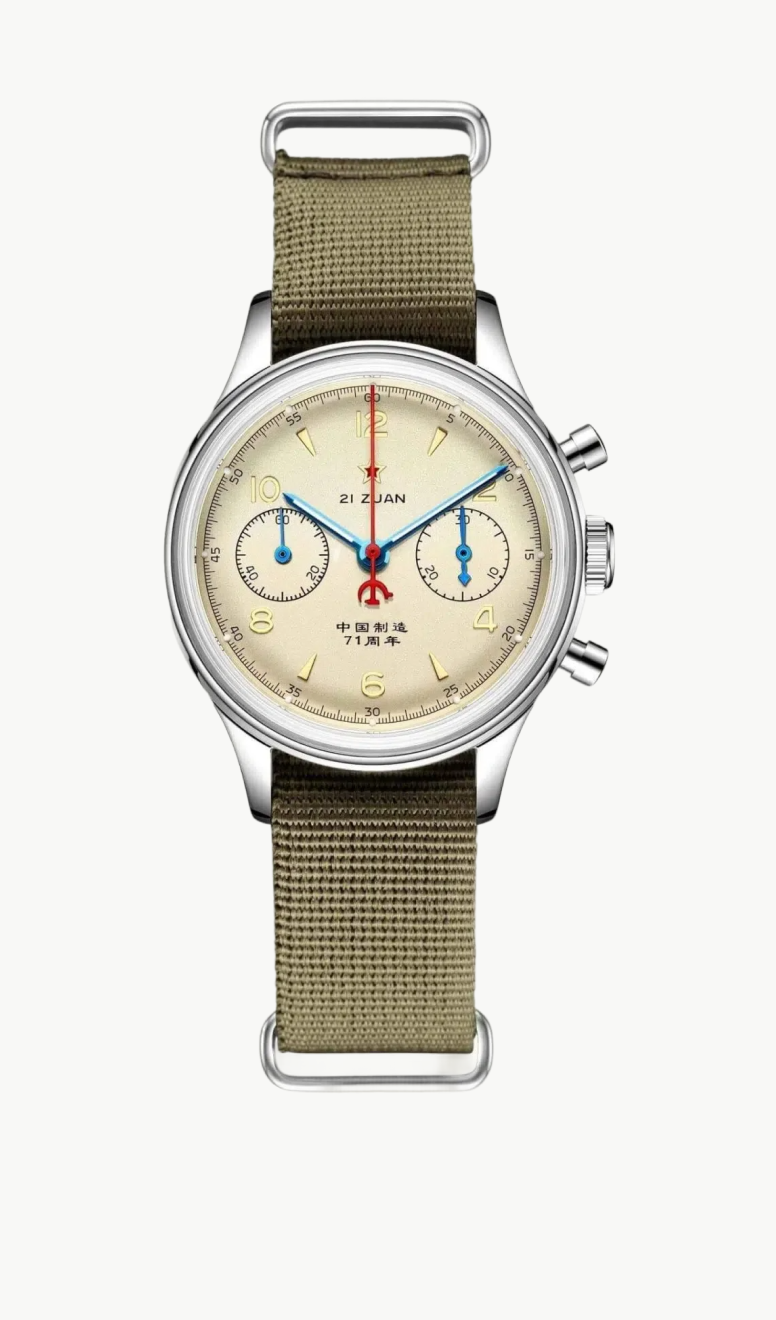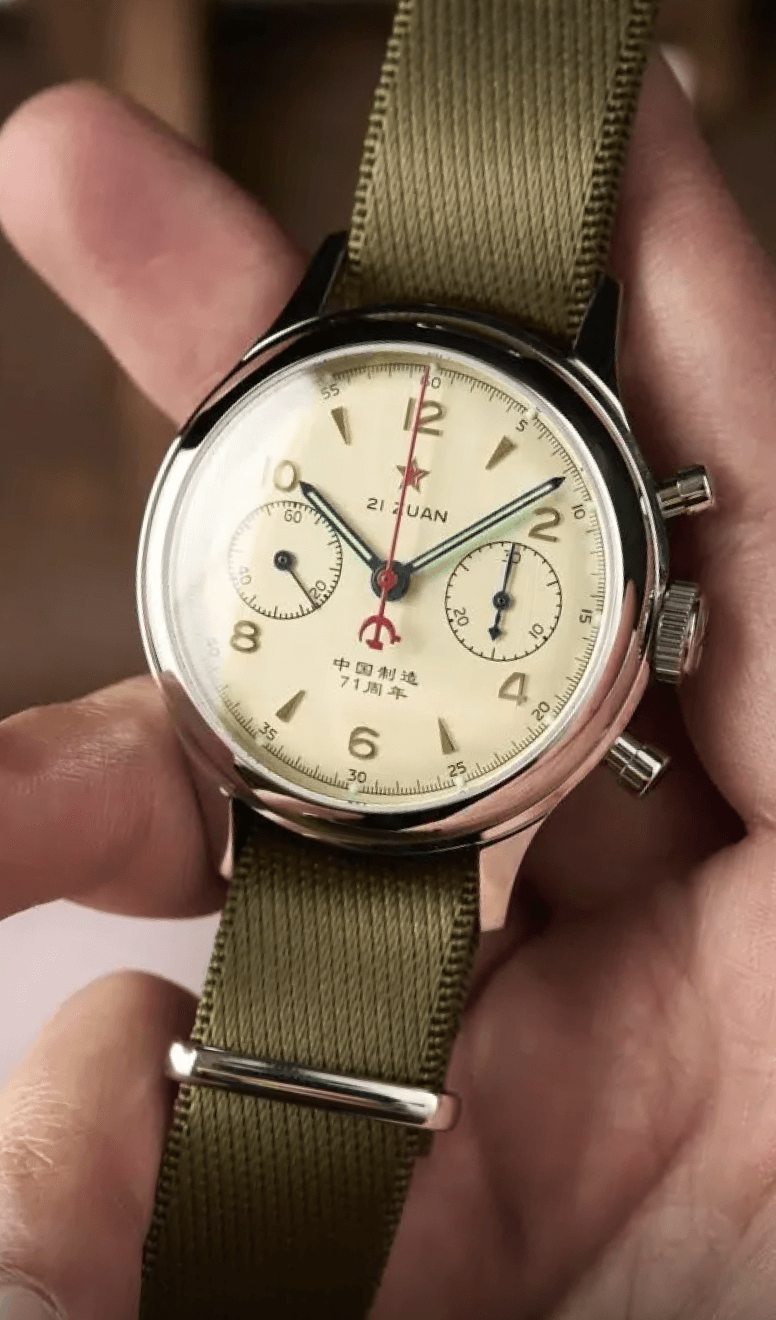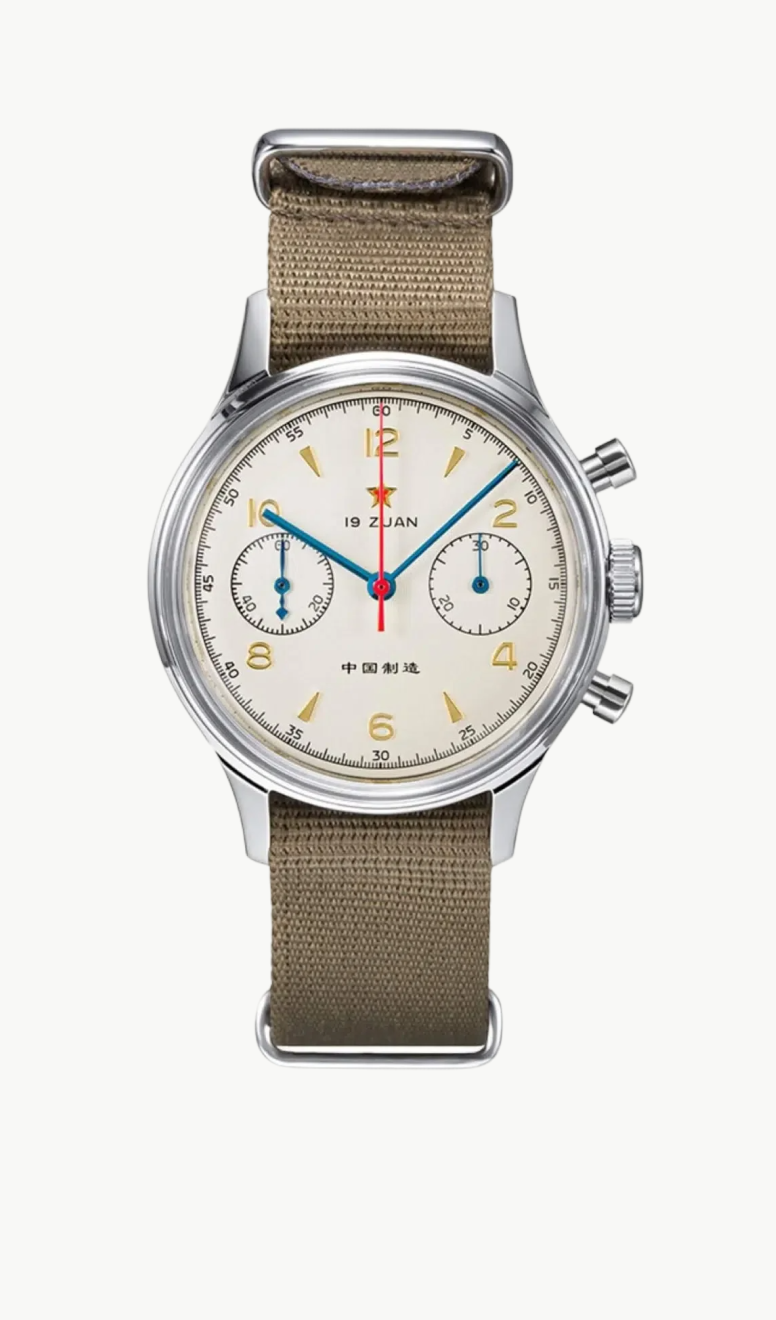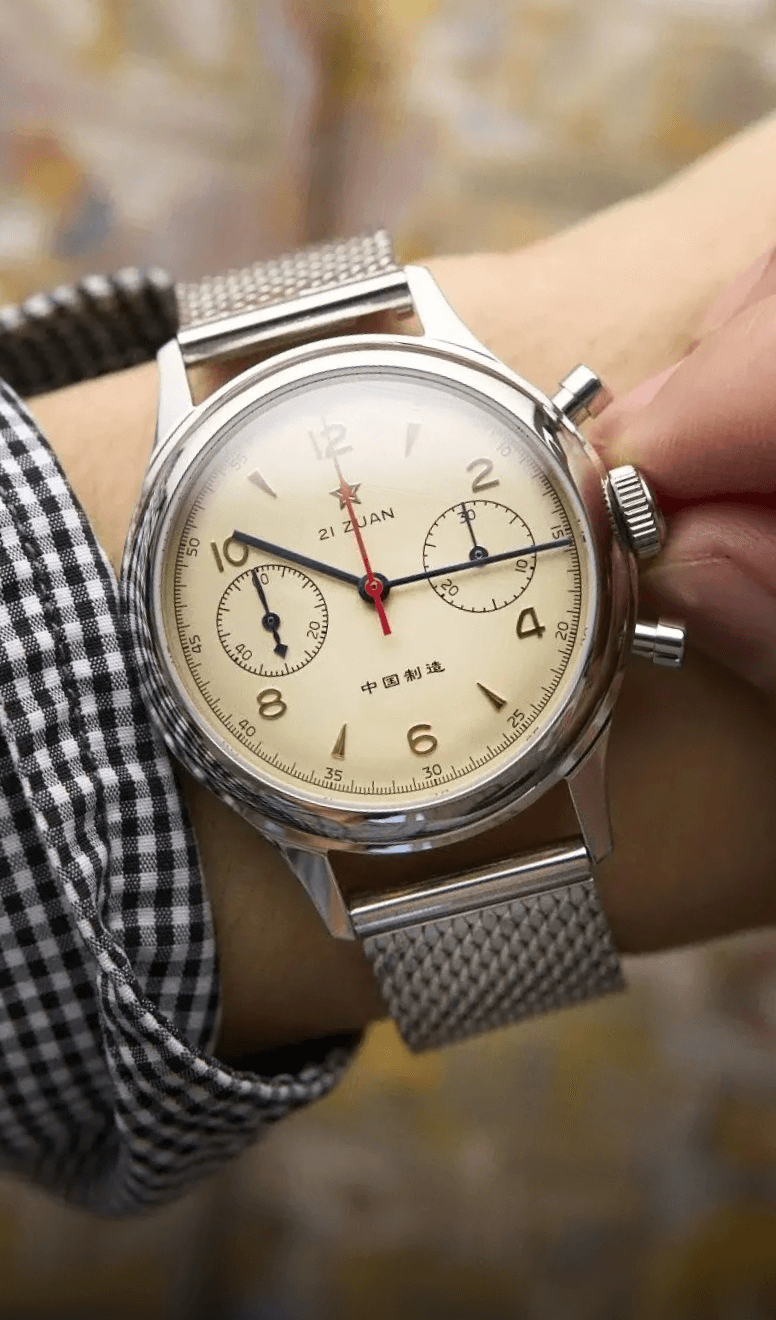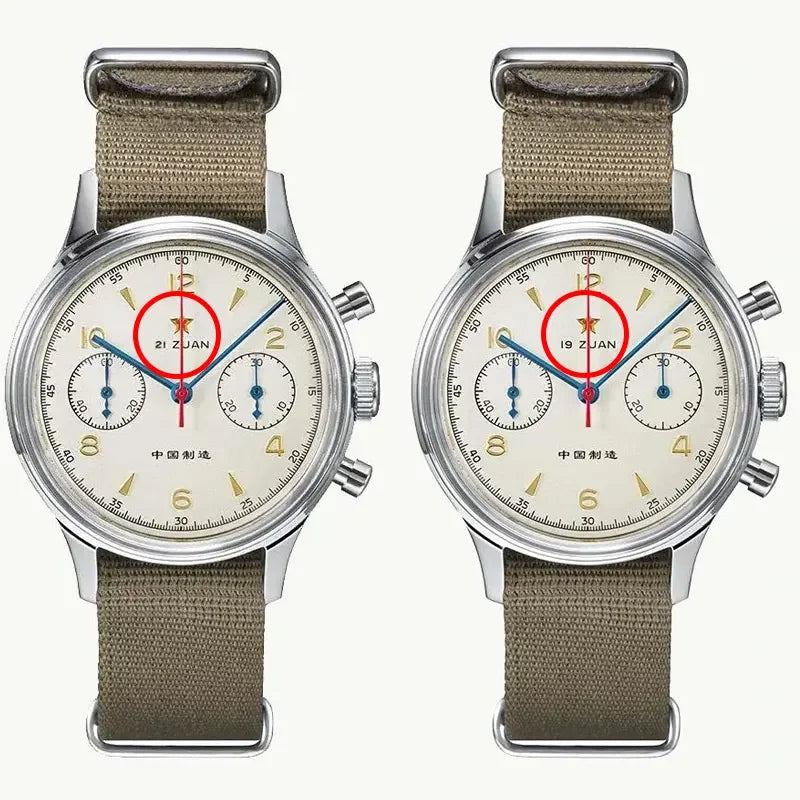A few common questions we often get are: what is the exact difference between the 19 zuan watch and the 21 zuan watch?
Is the 19 zuan chronograph movement inferior to the 21 zuan movement? Is there any performance difference between the 19 zuan Seagull and the 21 zuan version?
To answer these questions we first have to know what ‘zuan’ actually means! The literal translation from Chinese to English of ‘zuan’ in the context of watch movements is the ‘jewel’. But what are these jewels actually for in a watch?
Jewels in a watch movement are the bearing. Mechanical watches (both automatic and handwinding movements) don’t use any battery but instead use spring-wound movements where a spring is winded with potential energy that is slowly released to make the watch run.
Just like with any other ‘engine’, moving and rotating parts like gears need bearings to reduce friction. The bearings in a mechanical watch movement are called ‘jewels’.
These jewels were made from precious gemstones in the past since they are smooth and don’t allow for a lot of friction, thus making the watch gears run more efficiently.
In the first decades of watchmaking, natural genuine ruby stones were used to create these bearings in the movement. Slowly these natural rubies were replaced by synthetic rubies created in a lab or even sapphires.
All parts that make contact with each other and could easily wear down like escape levers, impulse wheel, gears, balance wheel, etc. have these natural or synthetic gemstone bearings making the watch more reliable and run smoothly. Without the bearings the watch components would easily get worn out.
The more complications a watch has, the more moving parts, thus the more bearings it would need since more bearings are needed to reduce friction between moving components.

Watches with perpetual calendars, chronographs with a start/stop function, tourbillon watches,… naturally use more bearings than simple movements with only a date function.
What is not true is that the more jewels are used, the better quality a watch movement has! This is a common misconception between watchmakers and watch retailers.
Around 1960 there were a lot of manufacturers who were competing to produce watches with the most amount of jewels (some going as far as using 100+ jewels!), purely for the fact that people assumed more jewels meant a more complicated movement.
In 1974 the ‘over-use’ of jewels for marketing practices was stopped by the ISO- 1112 standard. This prevented watch factories from using excess non-functional jewels in their watches just for advertising purposes!
On some Seagull 1963 watches we see ‘Seagull 19 zuan’ printed on the dial just below the golden bordered red star under 12 o-clock, on some dials we see the 21 zuan printed.

The difference between the ‘19 zuan 1963’ and the ‘21 zuan’ version is quite simple! The acrylic watches have ‘19 zuan’ printed on the dial while the sapphire watches have ‘21 zuan’ printed on the dial.
The reason why acrylic watches have ‘19 zuan’ printed on the dial is because the original project d304 from 1963 was only produced with an acrylic glass and the movement back then had 19 jewels.
It’s just a hint to the past, a more faithful reproduction of the original, nothing more, nothing less. All watches that use a Seagull st1901 movement have 21 jewels these days.
Since the sapphire version of the Seagull 1963 chronograph watch was only recently added to the collection, the choice was made to print the actual amount of jewels the st19 movement has on the watch dial!
Hope this explanation cleared it up for you guys, let us know if you have any other questions
